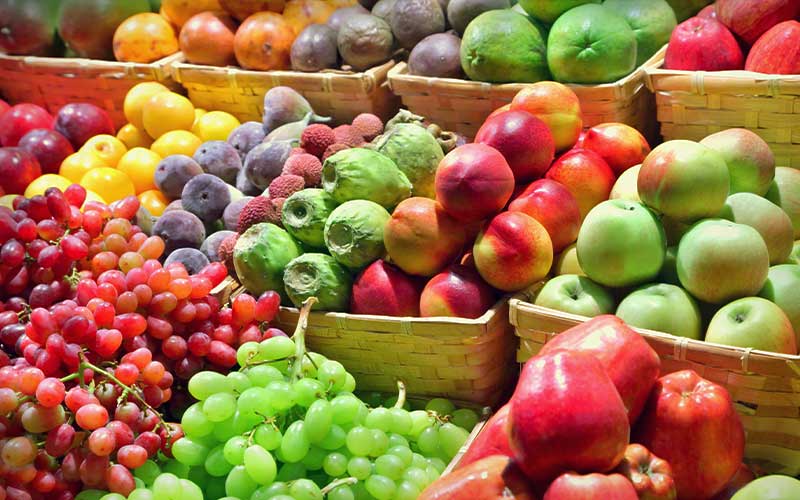In late 2019, Blue Yonder’s shared research found that £144 million ($177 million) in food waste could be prevented by the UK’s top eight grocers each year by implementing artificial intelligence (AI) and machine learning (ML) in their supply chains. The COVID-19 crisis has made this number much higher, as consumer habits have drastically shifted in response to unemployment spikes and general fears of the virus.
But food waste isn’t a new problem brought on by the current pandemic. According to the UN, as much as a third of the total food production is wasted in the supply chain. Waste not only affects a business’ social and environmental goals, but it also affects profitability. The magnitude of the issue is huge, and grocers and producers have consistently struggled to deal with it, especially as sustainability continues to become a focal point for many organizations.
Grocers who hadn’t implemented AI and ML into their supply chain technologies before the pandemic should strongly consider doing so now. Supply chain transparency and flexibility have proven instrumental in dealing with new issues brought on by COVID-19, and longstanding issues like food waste.
Main Causes of Food Waste
One of the most prominent causes of food waste is inaccurate forecasting. If we knew exactly which products were needed, in what quantities, during which times, we’d end the problem of food waste in the supply chain. But this isn’t yet possible (nor may it ever be), and many have been slow to adopt technologies that offer accurate forecasting capabilities. Many factors affect consumer demand. Each factor affects demand differently for every product in every region. Without the right technology that can analyze consumption patterns accurately, chances are that demand will not be forecasted accurately.
“Typically, a lot of the management in a grocery store is still very manual,” said Robin Tunderman, Global Supply Chain Solutions VP at Blue Yonder. “You have the department heads walking through the aisles with their notepads, assessing how many boxes of bananas and tomatoes they need. It’s a gut-feel decision, which can’t possibly consider all the variables.”
Tunderman also asserts that lack of technology adoption means grocers’ pricing strategies aren’t usually well-matched with their supplies, leading to unsold food that eventually goes straight to the garbage.
“Grocers need to have better alignments between their stock and their pricing strategies so they can sell everything at the right moment in time before expiration,” continued Tunderman. “If you have a large quantity of a less-desired item coming in and you don’t reduce its price, you’re not going to sell through the whole batch.”
Investments in the right supply chain technologies will help diminish the challenges associated with food waste, leading to a more profitable and sustainable operation overall.

How to Minimize Food Waste
Several processes can be automated through AI and ML, including:
- Forecasting & Replenishment: To minimize waste and maximize profit, it’s imperative to use modern forecasting and replenishment tools to analyze all the components that affect key decision-making processes. Powered by AI, they can consider outside factors like the weather, time of year, historical data, etc., which can all play a big part in what will sell and what won’t.
- AI-based Pricing: Pricing is one of the most influential factors impacting demand. The right pricing strategies driven by AI and ML will also minimize food waste by driving higher demand before reaching expiration dates. This technology takes the guesswork out of pricing, providing strategic adjustments to maximize sales before certain foods are no longer fit for consumers. For example, as a shipment of milk nears its expiration date, pricing tools, powered by AI, can proactively suggest moderate markdowns to ensure that profits are maximized, and stock is used before it goes bad.
- Merchandising: AI-powered merchandising technology can help accurately curate the right product assortments in every store to optimize demand. For example, there may be a demand for 50 different options of yogurt, but not all 50 will be carried in every store. By analyzing localized causal factors, like events, weather, or even social media trends, AI and ML solutions can optimize that list to only include the best-selling options. Larger volumes of the best-selling options can be ordered, leading to higher profit and less waste.
Implementing advanced supply chain technology can also help ensure staff is utilized more efficiently. If AI and ML technologies are used to make important, time-consuming inventory decisions, time can be freed up for staff to perform more valuable tasks and interact more with shoppers, positively affecting customer service satisfaction. Leveraging these planning capabilities creates a better overall shopping environment while improving profitability and sustainability.
The most important measure that can be taken to reduce food waste is to accurately track it. Knowing the causes of waste, what products are wasted, when they’re wasted, and how are they disposed of creates an accurate picture of demand vs. waste which improves the quality of data used to generate more accurate forecasts. Other waste mitigating practices like food bank and shelter donations or adjustments to prepared foods are also highly encouraged to help make sure food is utilized before it expires.
If advanced supply chain technology investments weren’t at the top of an organization’s priority list before the coronavirus pandemic, they definitely should be now. Through capabilities driven by AI and ML, advanced supply chain technology not only helps maximize profitability and creates more engaging shopping environments but also reduces food waste, helping businesses achieve overarching sustainability goals.


Comments are closed.